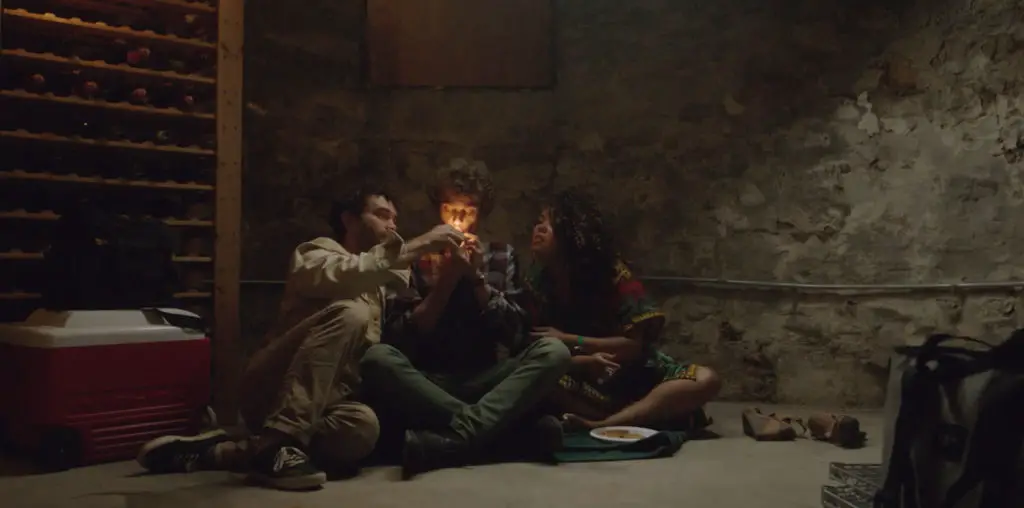
Long before Twilight and The Vampire Diaries, cinematic visionary F.W. Murnau directed the first vampire feature ever made for the big screen. This film was called Nosferatu: A Symphony of Horror (1922). Written by Henrik Galeen, Murnau gave no credit to Bram Stoker for his pioneering novel, Dracula (1897). Needless to say, copyright infringement loomed and Stoker’s widow demanded immediate changes in regard to the film’s setting and characters. Murnau promptly abided substituting Count Orlock for Dracula and replacing the label, vampire with Nosferatu. In spite of these compromises, Stoker’s widow sued and all cinematic prints were destroyed. It is only through distribution of bootleg files that we are able to access this magnificent work of art.
Friedrich Wilhelm Plumpe was born December 28, 1888 in Bielefeld, Germany. Considered an anomaly, this serious-minded, gay perfectionist who greatly appreciated art history felt very much the outcast. And so he reinvented himself as F. W. Murnau and not only changed his own status, but set the path of cinematic history. Murnau took his new name from the small German town, Murnau am Staffelsee. This village on the fringe of the Bavarian alps was the home of the Blue Riders; artists who believed painting was the only way to achieve metaphysical insight. Led by Wassily Kandinsky, this movement of 1911-1914 laid the groundwork of Expressionism. It is interesting that metaphysical Expressionism structure all Murnau’s films, most notably his masterpiece, Sunrise: A Song of Two Humans (1927). There are also many theatrical components to Murnau’s filmography that are especially pronounced in Sunrise. This interest in theatre began during WW1 when Murnau was a fighter pilot. Seized as a prisoner of war, he passed his time directing theatrical productions.
Theatrical qualities are particularly evident in painterly-lighting. This coupled with extended takes provides tones and scenes reminiscent of Vermeer and Van Gogh. Examples of these may be found in the scene where The Woman from the City emerges from her darkened rental lodging and gradually comes into deep focus as she walks to The Man’s home under the moonlight. Extended takes of the countrywomen gossiping in the foreground could easily be frozen into stills resembling early Dutch paintings. Theatrics are also noted in Murnau’s flowing or poetic, experimental camerawork. One example is the aerial crane shot that encircles an elaborate city restaurant and then fluidly zooms into an extreme close-up of a character. Theatrical acting infiltrates all characters, most extravagantly portrayed in the first boat scene when The Man threatens The Wife.
Metaphors abound in this moral tale. The most obvious example is the crucifix imprinted on The Wife’s bedspread. Another concerns the sleezy meeting place of The Man and The Woman from the City at the beginning of the film. Entrenched in evil they plot in the wetlands at night, enveloped by mud.
Screenwriter Carl Mayer adapted Sunrise from a book written by Hermann Sudermann. There are three principals: The Man (George O’Brien), The wife (Janet Gaynor) and The Woman from the City (Margaret Livingston). Names of people, cities and towns are purposely omitted to create a universal, timeless atmosphere. In this simple tale a farmer, his wife and baby live a blissful and contented life until a woman from the city threatens their existence. When the boundaries between love, lust and murder begin to blur, this simple farmer must make a life altering decision that will affect everyone involved.
Two cameras were used to shoot Sunrise. The first was aptly operated by Charles Rosher. Rosher worked with Murnau on Faust (1926) and the two had a great rapport. The second camera was controlled by renowned, still portraitist and fashion photographer, Karl Struss. When William Fox brought Murnau to The United States to direct Sunrise, his goal was to produce a German Expressionist film in Hollywood. Murnau returned to Germany immediately after shooting, and most likely did not approve the intertitles attached to his film. These titles prepared by HH Calwell and Katherine Hilliker, were often heavy-handed and overly explicit at the beginning of the film. Since Murnau tended to be a metaphorical filmmaker, preferring few to no intertitles in his work— as in The Last Laugh (1924)—thankfully the titles subsided as Sunrise progressed. In spite of Murnau’s unhappiness regarding fine details and the film’s box office failure, Sunrise acquired great critical acclaim and won Oscars for Best Picture, Best Cinematography and Best Actress in a Leading Role. The film was also nominated for another Oscar for Best Art Direction and is now considered the greatest silent film ever made. Murnau made two more films at Fox Film Corporation; namely, Four Devils (1928) and City Girl (1930). Much like Sunrise, the latter two were sound synchronized and were not commercially successful in their time.
Eureka Entertainment’s newly distributed 2-DVD set of F.W. Murnau’s Sunrise: A Song of Two Humans is a magnificent treat for first time Murnau-viewers and seasoned cineastes. DVD-1 contains the groundbreaking American version with a synchronized original score and gorgeous in-camera effects. It also includes commentary by ASC cinematographer John Bailey, outtakes, the first trailer and a documentary about Murnau’s lost film, Four Devils (1928). This unique archive by Janet Bergstrom pieces together publicity stills, two motion picture ghost images, charcoal sketches and the 1927 screenplay. From these traces, Murnau’s missing film emerges.
Murnau broke ties with William Fox because of irreparable artistic differences. It was while Murnau shot his final film, Tabu: A Story of the South Seas (1931), that Fox experimented with alternative endings for Four Devils. He finally settled upon a clichéd, happy ending with synchronized dialogue—a finale Murnau would never have approved. On March 11, 1931 at the age of 42, Murnau was killed in an automobile accident in Santa Barbara, California. This untimely incident directly preceded his plan to join Paramount Studios and the premiere of Tabu.
DVD-2 contains the Czechoslovakian version of the original film. This alternative is vastly edited, providing an entirely different, greatly diminished interpretation of Murnau’s vision.
